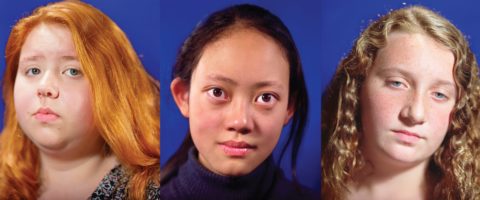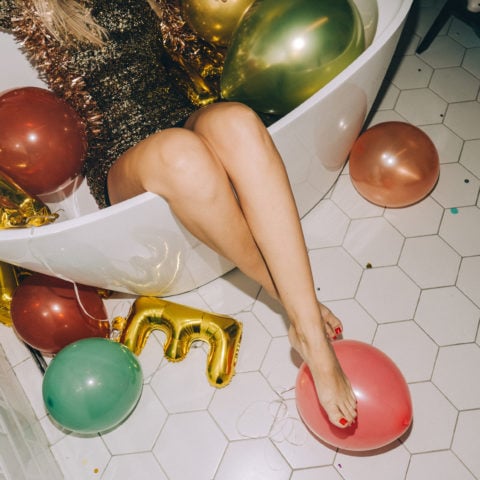Eva O’Leary on How Photography Is Affecting Teenagers’ Sense of Self
“I’ve always felt uncomfortable with the power dynamic between the photographer and the subject. By letting them decide when they liked what they saw, I was giving them more agency with the photograph.”
Even before snapping selfies was a thing, Eva O’Leary was taking photos of herself when she was 13 years old. At the time, it was just something she felt she needed to do but didn’t understand why. When she was older, she realized that it was her way of trying to understand how people saw her versus how she saw herself. The Irish-born, U.S.-based photographer labelled each jpeg with what she describes as “super-embarrassing titles like ‘maybesexy?’ or ‘lookingsad.’”
“We had returned to Ireland that year, and I was in this weird limbo,” recalls the 29-year-old artist whose images have appeared in The New Yorker, Artforum and Aperture. “I spent most of that year in my bedroom. When I returned to the States the following year, all my friends had changed. Before I left, we were baking brownies and watching movies; when I came back, everyone was partying. It was a giant shift; I had to figure out a new identity. The examples of femininity in my small town were hyper-sexualized. Soon I was dyeing my hair blond and wearing lots of makeup.”
“It was a giant shift; I had to figure out a new identity. The examples of femininity in my small town were hyper-sexualized. Soon I was dyeing my hair blond and wearing lots of makeup.”
Years later, when she was doing her master’s in fine arts at Yale University, O’Leary showed her adviser her teenage photos from Ireland and the ones she had taken after her hometown “makeover.” They were both surprised at the transformation that had taken place. “There’s visual evidence of the pressure I was under,” explains O’Leary. “I turned into a stranger—but now I’m back to being the same girl I was in those first pictures from Ireland. I’ve come full circle.”
The experience inspired O’Leary to create Spitting Image, a collection of tightly shot portraits of students from her hometown of State College in Pennsylvania who identified as female and were between the ages of 11 and 14. “I thought about how teenagers are using photography now to understand and construct their identity in such a super-intense way,” she explains. “I wanted to explore that without taking photos that reinforce problematic beauty standards.”
The teens were asked to sit in front of a two-way mirror. When they were satisfied with the image they saw, they were told to hold still while O’Leary took their photo using an 8×10 camera. O’Leary was behind the mirror in a blacked-out tent, so the girls never saw her or the reflection of the camera in the mirror.

“As a photographer, I struggled with how to represent someone in an image without my presence complicating the dynamic,” she explains. “I’ve always felt uncomfortable with the power dynamic between the photographer and the subject. By letting them decide when they liked what they saw, I was giving them more agency with the photograph.”
In O’Leary’s portraits, the young women appear pensive and authentic. Their raw honesty—blemishes, errant hair and freckles—is especially captivating in these heavily filtered and Photoshopped times.
In addition to the portraits, O’Leary videotaped the teens while they readied themselves for the shot. While some of them assume a pose rather quickly, others fidget with their hands or play with their hair while still others nervously pull at their shirts. One girl raises her arms up in front of her face to shield herself from her image in the mirror. Her vulnerability is palpable.
“There’s visual evidence of the pressure I was under. I turned into a stranger—but now I’m back to being the same girl I was in those first pictures from Ireland. I’ve come full circle.”
O’Leary debuted the portraits and videos in New York at Crush Curatorial gallery and later entered them into this year’s Hyères International Festival of Fashion and Photography in France. O’Leary won the juried competition and was awarded 15,000 euros from Chanel, one of the festival’s sponsors. “This money will be incredibly helpful,” she says. “I have been sitting on work that I wasn’t able to do because I didn’t have the money. To have this cushion now is amazing.”
As for what she sees when she looks in the mirror, O’Leary says her efforts to understand her identity are ongoing. “Working with these young girls was inspiring,” she says. “I was just out of grad school when I started this project. I had a rash on my face that I was hyper-aware of, but when I saw the girls struggling with their own insecurities, it made me feel less alone. It was a more universal experience than I thought it would be.”








